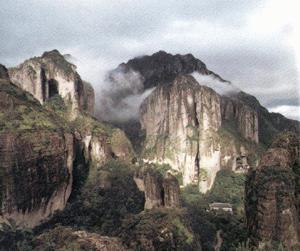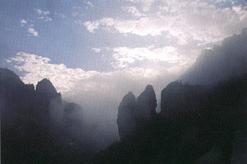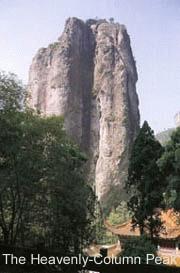 Fascinating as the landscape is in such a frame, the splendeur of the Yandang Mountain has been noticed since the Tang Dynasty (618-907). Located by the East China Sea and infused in a natural as well as cultural climate, the charisma of the mountain can by no means be framed in photos.
Fascinating as the landscape is in such a frame, the splendeur of the Yandang Mountain has been noticed since the Tang Dynasty (618-907). Located by the East China Sea and infused in a natural as well as cultural climate, the charisma of the mountain can by no means be framed in photos.
It’s immensely large– a large natural reserve named Mt. Yandang National Scenic Zone (Yandang literally means the wild goose and marsh). Situated in the southeast of Zhejiang Province, China, Mt. Yandang extends an area as large as 450 square kilometers. High rocks, fascinating caves, a good deal of waterfalls are specked everywhere in the zone thai defines the Chinese scroll painting.
 Large as it be to a many ancient travelers, such as Xu Xiake, a famous traveler-geographer in the Ming Dynasty(1368-1644) who paid three visits to Mt. Yandang in his life time. “l would have seen all the wonders in the mountain if I were a flying celestial.”
Large as it be to a many ancient travelers, such as Xu Xiake, a famous traveler-geographer in the Ming Dynasty(1368-1644) who paid three visits to Mt. Yandang in his life time. “l would have seen all the wonders in the mountain if I were a flying celestial.”
“The beauty is beyond description,” said a poet in the same way. “Yes, it denies words”, a prose writer could hardly disagree. However, it’s become the very reason to attract people to Mt. Yandang generation after generation.
The earliest visitor known to the Yandang Mountain was Xie Lingyun, a poet-governor of Yongjia Prefecture in the Southern Dynasties (385-433). As a matter of fact, he learned very little, if any, he had possibly seen only a small portion of the mountain.
 Yandang’s early reputation owes much to the following three men, or actually three monks in the Tang Dynasty (618-960). One was an Indian monk called Nuojuna, the founder of the first Buddhist temple in the area, who came settled here with his 300 disciples. The second was the well-known Master Yixing, who left behind with a painting of the mountain named “the Landscape And Its Two Borders”. And the third was Guan Xiu, a poet-monk whose poem depicting Mt. Yandang is still remembered. I reads: “Strolling along the path of the Yandang Mountain, I felt the peaks crowned with a misty gauze; while drinking tea by the side of the Dragon Waterfall, I myself was imbued in a drizzly cloud.”
Yandang’s early reputation owes much to the following three men, or actually three monks in the Tang Dynasty (618-960). One was an Indian monk called Nuojuna, the founder of the first Buddhist temple in the area, who came settled here with his 300 disciples. The second was the well-known Master Yixing, who left behind with a painting of the mountain named “the Landscape And Its Two Borders”. And the third was Guan Xiu, a poet-monk whose poem depicting Mt. Yandang is still remembered. I reads: “Strolling along the path of the Yandang Mountain, I felt the peaks crowned with a misty gauze; while drinking tea by the side of the Dragon Waterfall, I myself was imbued in a drizzly cloud.”
Mt. Yandang came to be widely known during the Song Dynasty (960-1279). Though it’s too late to be made famous as those of the Five Mountains in China, but it’s her fortune: being better preserved, and absolutely natural.
Well, we might have to feature it in some way if necessary: It’s magnificent with no lack of tender; it’s loosely simple but with no short of greenery; it’s deeply dense but also has broad views, and it appears steep and sharp where the very charming remains… Yet, whatsoever it should be, two words simply put by Shen Kuo(1031-1095), a Northern Song Dynasty scientist are mostly quoted: It’s “uniquely fascinating”.